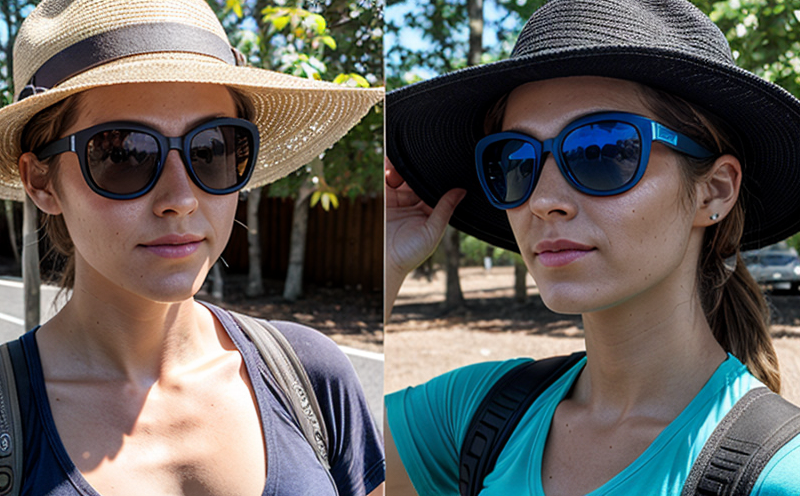BS EN ISO 4892 Light stability testing of materials under artificial light
The BS EN ISO 4892 standard is a comprehensive framework designed to evaluate the light stability of materials, ensuring their durability and performance under conditions that mimic real-world exposure. This test method aims to assess how effectively materials withstand the damaging effects of UV radiation from artificial sources like xenon arc lamps or fluorescent lamps.
This type of testing is critical for industries such as textiles, where maintaining colorfastness and structural integrity over prolonged periods is paramount. The standard defines procedures that simulate both shortwave (UV-A) and longwave (UV-B) components of sunlight, providing a more accurate representation of the aging process than simple exposure to daylight.
The test involves exposing samples to controlled artificial light sources for specified durations under specific conditions. Specimens are often placed on rotating platforms to ensure uniform irradiation across all surfaces. The duration of the test can vary based on the material being tested; however, typical exposure times range from 200 hours up to several hundred hours.
During testing, critical parameters such as color change, fading, and loss in mechanical properties are monitored. Color changes are quantified using spectrophotometers, while reductions in tensile strength or other physical properties may be assessed through mechanical tests like the tensile test. These measurements help determine whether a material will maintain its appearance and performance over time.
The BS EN ISO 4892 standard also includes provisions for evaluating lightfastness on different types of textiles, including woven fabrics, knitted fabrics, and non-woven materials. This versatility makes it applicable across various sectors, from fashion to automotive upholstery and outdoor gear manufacturing. By adhering strictly to this international standard, manufacturers can ensure that their products meet stringent quality standards while minimizing risk associated with premature deterioration due to exposure to sunlight.
Understanding the nuances of BS EN ISO 4892 is essential for those involved in material science research or development. It provides a robust foundation for developing new materials that are resistant to fading and degradation under artificial light conditions, thereby enhancing product longevity and customer satisfaction.
- Maintains colorfastness
- Ensures structural integrity
- Reduces risk of premature deterioration
- Enhances product longevity
- Increases customer satisfaction
In summary, BS EN ISO 4892 offers a standardized approach to evaluating the light stability of materials under artificial light conditions. This method is vital for industries like textiles where maintaining quality and performance over time is crucial.
Quality and Reliability Assurance
The reliability of results obtained from BS EN ISO 4892 tests depends heavily on proper sample preparation, adherence to standardized procedures, and the use of high-quality equipment. To ensure accurate and reproducible outcomes:
- Samples should be representative of the finished product.
- Preparation methods must follow specified guidelines outlined in the standard.
- All measurements need to be taken under controlled environmental conditions.
The laboratories performing these tests must maintain strict quality control measures, including regular calibration of instruments and validation of test methods. Compliance with these standards ensures consistent results across different batches or lots of materials, providing confidence that products will perform as expected in real-world applications.
By incorporating rigorous quality assurance practices into their workflows, manufacturers can ensure they are delivering high-quality products consistently. This not only improves brand reputation but also fosters long-term customer loyalty by meeting or exceeding expectations regarding product durability and appearance retention.
Customer Impact and Satisfaction
The results of BS EN ISO 4892 testing have direct implications for customer satisfaction. Consumers expect products to retain their original appearance and functionality over time, especially when dealing with materials that are exposed to sunlight regularly.
- Enhanced durability: Products that pass these tests will last longer, reducing the need for frequent replacements or repairs.
- Better aesthetics: Maintaining colorfastness ensures that fabrics and coatings remain attractive over extended periods.
- Increased trust: Compliance with international standards builds confidence among consumers who value quality assurance.
For businesses, achieving positive customer feedback translates into higher satisfaction rates, improved brand reputation, and increased sales. The ability to demonstrate adherence to rigorous testing protocols can significantly differentiate a company from competitors in terms of product reliability and longevity.
Competitive Advantage and Market Impact
In today's competitive market, maintaining the integrity of materials under various environmental conditions is crucial for sustaining business success. Companies that invest in thorough testing like BS EN ISO 4892 can gain several advantages:
- Increased customer loyalty: By providing products with superior durability and appearance retention, companies foster long-term relationships.
- Enhanced reputation: Achieving compliance with international standards enhances a company's image as a leader in quality assurance.
- Competitive edge: Demonstrating advanced testing capabilities can set a brand apart from competitors, attracting more customers and expanding market share.
The ability to consistently deliver high-quality products that meet stringent light stability requirements positions companies favorably against market trends. As consumers become increasingly aware of the importance of sustainability and longevity in purchasing decisions, these attributes become even more valuable assets for businesses seeking growth and success.





